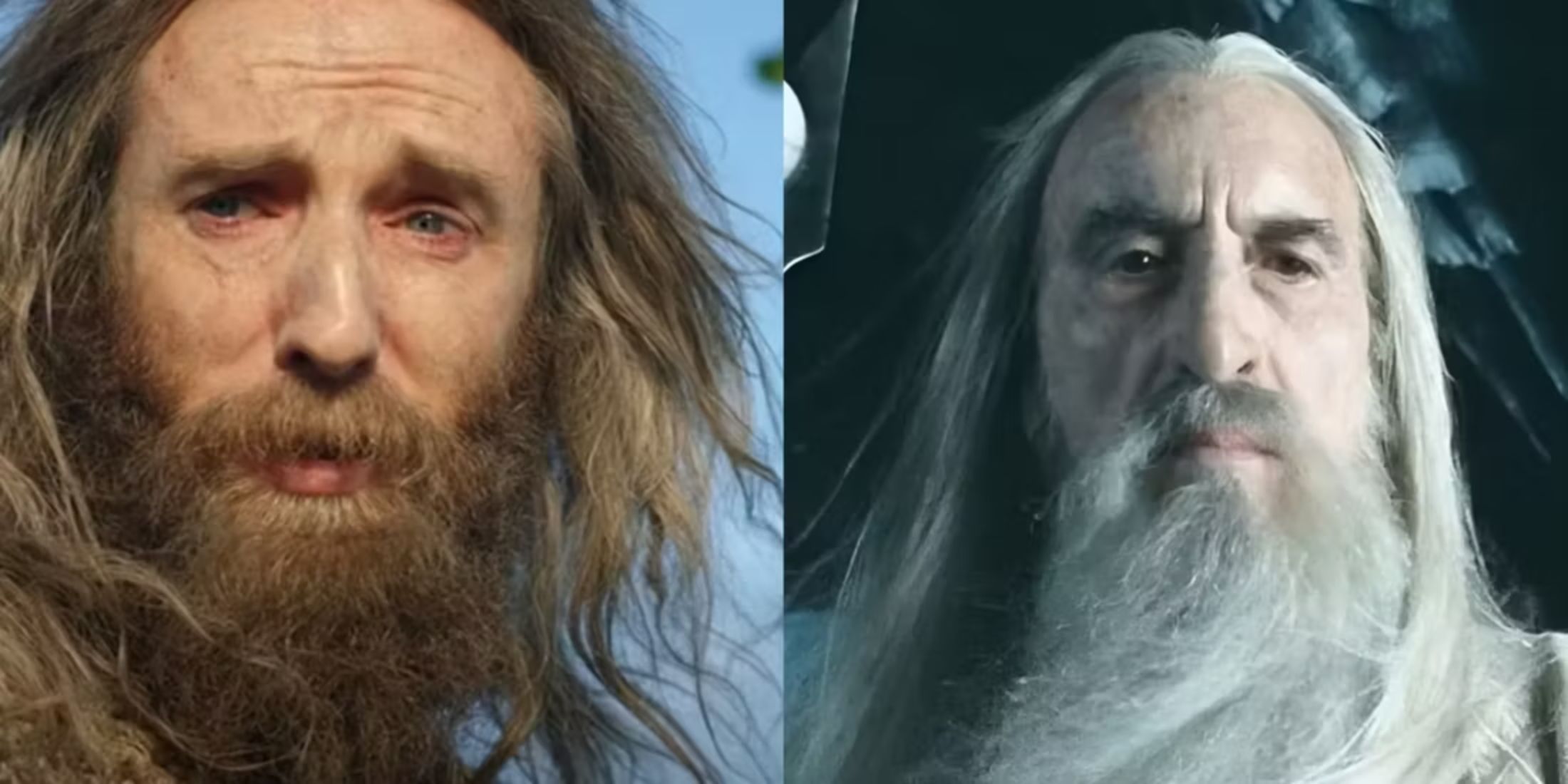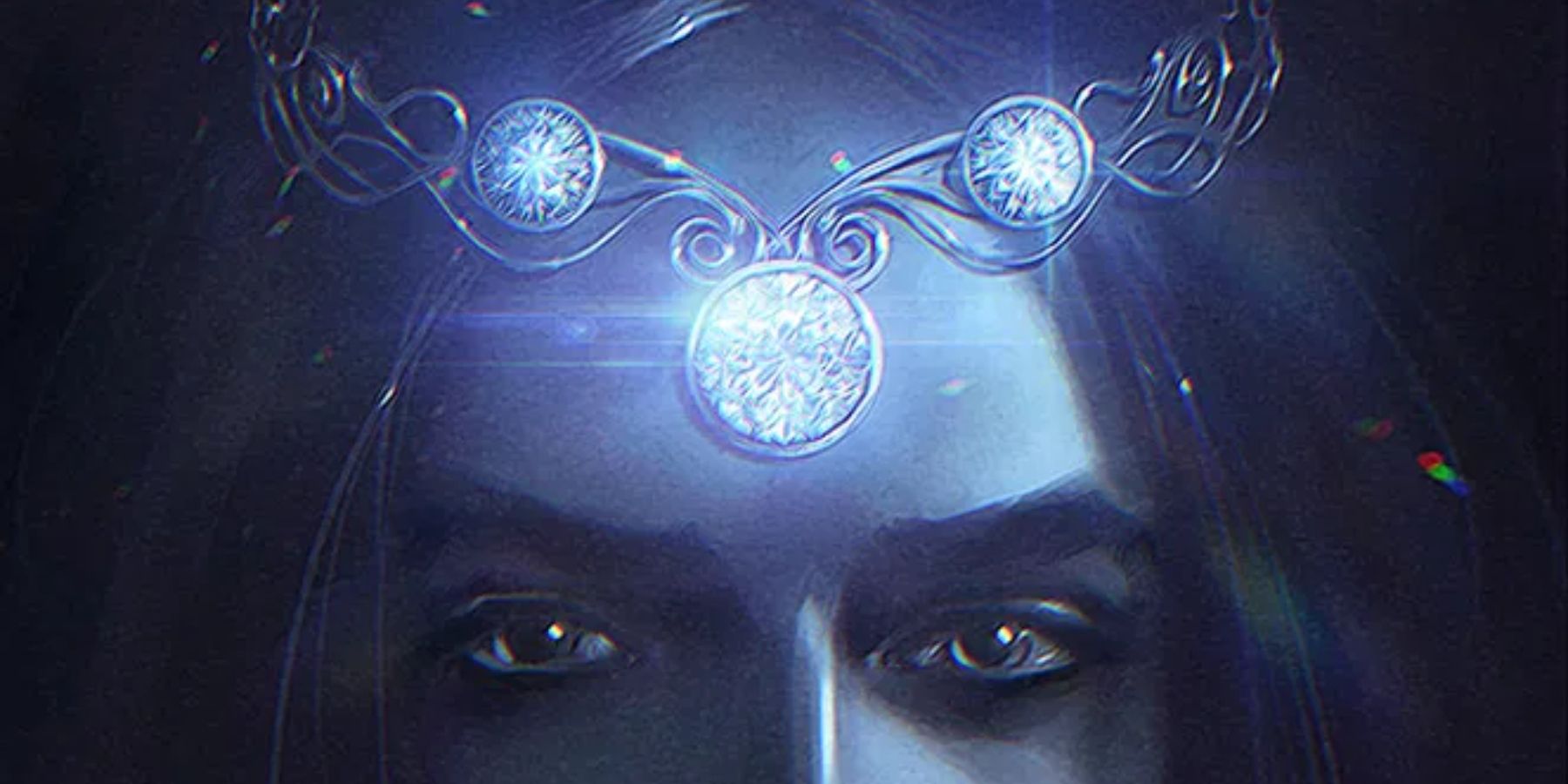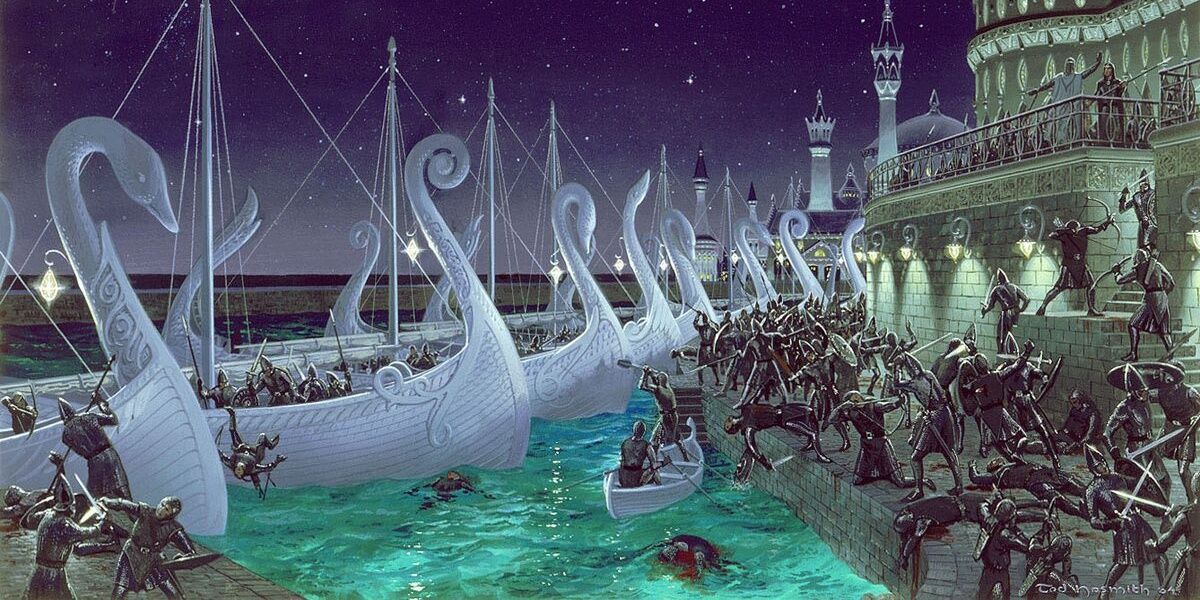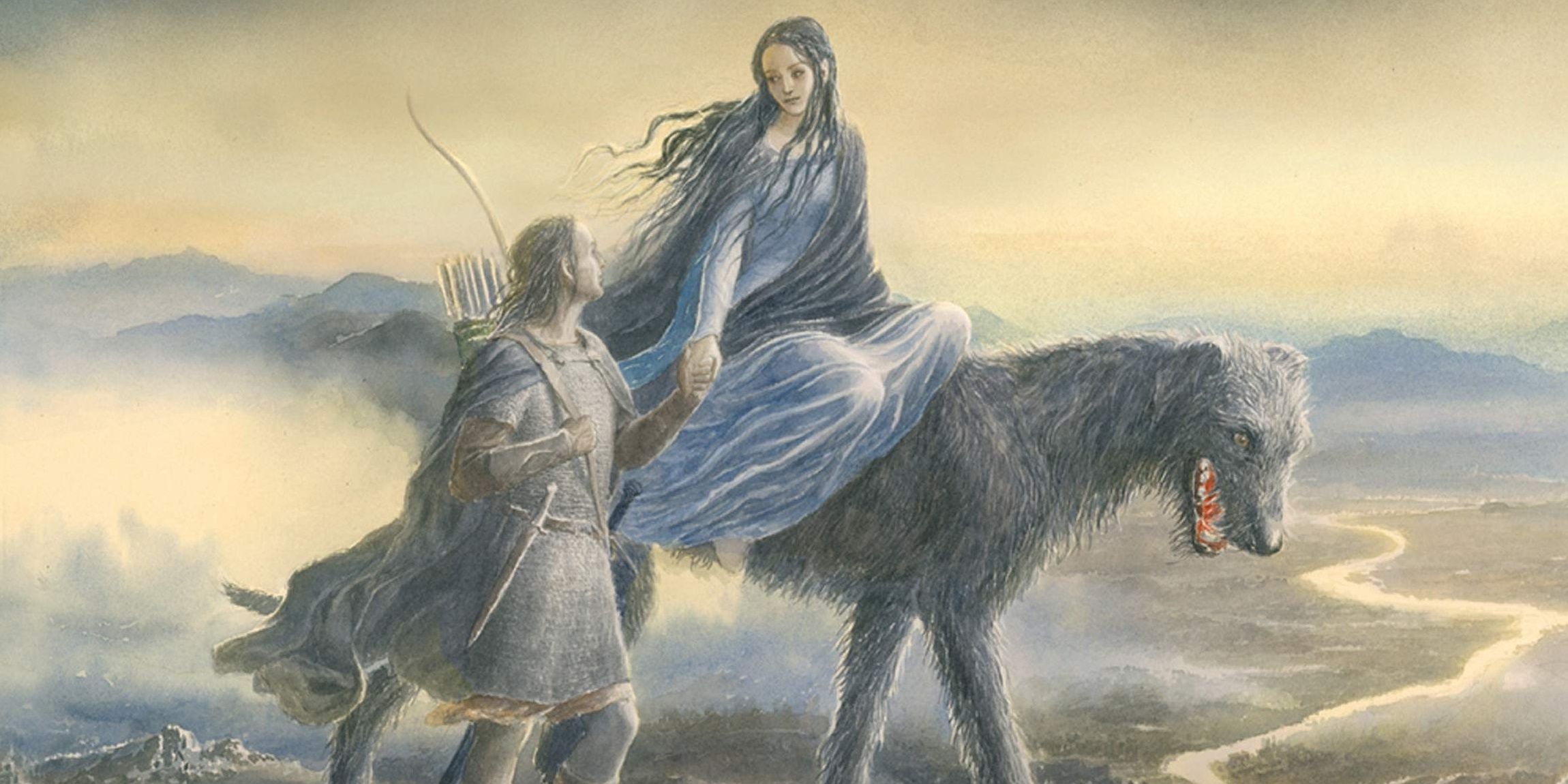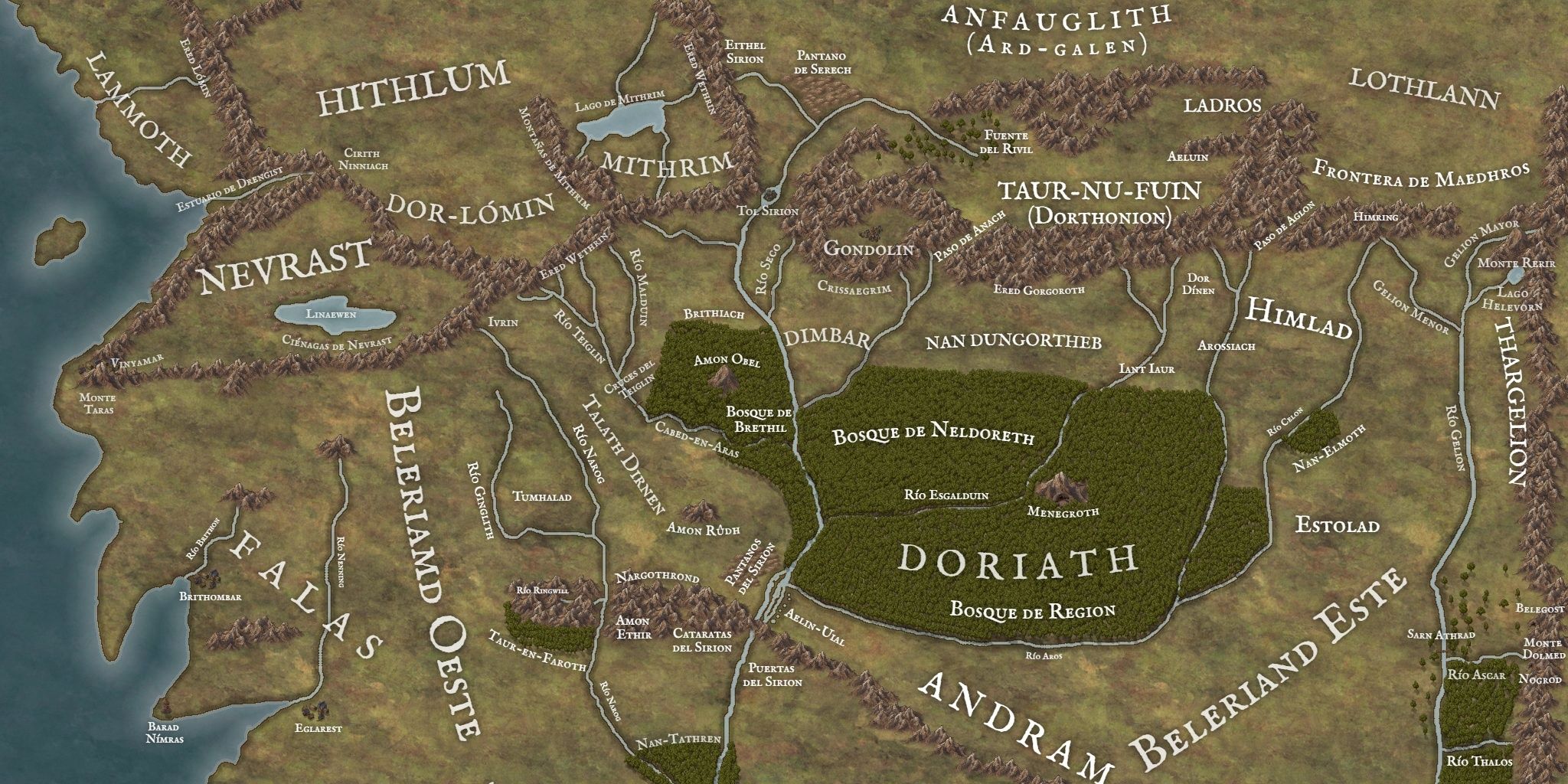Highlights
- The Silmarillion resolves gaps in the lore of The Lord of the Rings, focusing on the War of the Jewels during the First Age.
- Fëanor's fanatical desire for the Silmarils led to a series of wrongs, including the First Kinslaying at Alqualondë and a curse placed upon the Noldor.
- The Second Kinslaying occurred when Fëanor's sons demanded the Silmaril from Doriath and declared war, resulting in the downfall of the Elven kingdom. The Third Kinslaying, the cruelest of all, saw Maedhros attacking the Havens of Sirion, leading to devastating consequences.
Many of the gaps and inconsistencies in the lore of The Lord of the Rings are resolved in J. R. R. Tolkien’s collection of unpublished writings, The Silmarillion. The bulk of it focuses on events that took place before and during the First Age — the most prominent being the War of the Jewels. The conflict began in the Years of the Trees, after Morgoth (or Melkor) destroyed the Two Trees of Valinor. Only the Silmarils, a set of three gems crafted by the Ñoldorin Elf Fëanor, contained the remaining light of the Two Trees as they were created from their essence. Morgoth then killed Finwë, Fëanor's father, stole the Silmarils to set them in his crown, and escaped to Middle-earth. Furious, Fëanor and his seven sons vowed to wage war against anyone who withholds the Silmarils from them. What followed was a series of “great wrongs achieved by the accursed oath”, known as the Kinslaying.
Fëanor’s desire for the Silmarils was almost fanatical — foreshadowing Gollum’s obsession with the One Ring in The Lord of the Rings, in which he also participated in his own ‘kinslaying’. Fëanor’s oath led to the Valar cursing the Ñoldor with what is known as the Doom of the Ñoldor: “For blood ye shall render blood, and beyond Aman ye shall dwell in Death’s shadow.”
The First Kinslaying
The First Kinslaying, also known as the Kinslaying at Alqualondë, occurred when the forces of Fëanor hastened towards the Elven city of Alqualondë in Aman, hoping that the Teleri would let them take their vessels to cross the sea and follow Morgoth to Middle-earth. Fearing that any delay would cause the Ñoldor to reconsider, Fëanor tried to persuade the Teleri to help them. Olwë, Lord of Alqualondë, told Fëanor that they were grieved by the situation but could not offer any aid as it was against the will of the Valar. Secondly, he was not willing to sell the Swanships “for any league or friendship”, as “these are to us as are the gems of the Ñoldor: the work of our hearts, whose like we shall not make again.” He warned him against his course of action, but an angry Fëanor accused him of renouncing their friendship instead.
In defiance, the Ñoldor went to the Haven of the Swans and forcibly started to man the ships. The Teleri managed to throw many of them out of the ships, and also attempted to block the harbor. However, they were not warriors; they had “less strength”, and were “armed for the most part but with slender bows”. Even though they were able to retaliate for quite some time, the arrival of the host of Fingon (the eldest son of Fingolfin, High King of the Ñoldor) led to their downfall. Fingon’s forces misunderstood the scene before them, believing that the Teleri had attacked the Ñoldor under orders of the Valar, and joined the fight. As a result, many of the Teleri were slain, and their ships were taken.
This is when the Valar banned the Ñoldor from the Undying Lands in the west. The Sindar in Beleriand also refused to help the Ñoldor in their war against Morgoth, and did not even let them enter their kingdom. King Thingol also forbade the use of their language, Quenya, in his realm.
The Second Kinslaying
Even though Fëanor was eventually killed by Gothmog, the Lord of Balrogs, his sons were still bound by the oath to recover the Silmarils. The Second Kinslaying, or the Second Sack of Doriath, occurred in FA 506. Dior, the grandson of Thingol, was now the King of Doriath, and had inherited one of the Silmarils from his parents, Beren and Lúthien. When the news reached the Sons of Fëanor (“a Silmaril of Fëanor burns again in the woods of Doriath”), they demanded the return of the jewel but Dior rejected their claim on it. As a result, they declared war on Doriath to take it by force.
They arrived in the middle of winter and fought against Dior’s army in the Thousand Caves. Although the latter lost, a few of Fëanor’s sons (Celegorm, Curufin and Caranthir) were killed in the battle. Dior and his wife Nimloth were also slain, and their sons Eluréd and Elurín were seized, with their fate still unknown to this day. Only Dior's daughter, Elwing, escaped down to the Mouths of Sirion, along with the Silmaril. The Elven kingdom fell, only to never rise again.
The Third Kinslaying
The Third Kinslaying, which occurred in FA 538, was the final and “cruelest of the slayings of Elf by Elf”. When Maedhros, the eldest son of Fëanor, heard that Elwing had fled with the Silmarils, he prepared an army to attack the Havens of Sirion. Some of the Fëanorians refused to take part in the fight, but were eventually killed by their lords for rebelling against them.
Out of Fëanor’s sons, Amrod and Amras, were killed in the battle, leaving only Maedhros and Maglor alive. The Havens were destroyed and almost all the survivors from Doriath were slain. Elrond and Elros, sons of Eärendil and Elwing, were captured (although Maglor did adopt them later on). Maedhros and Maglor had no followers left, and could not even reclaim the Silmarils as Elwing had flung herself into the sea with it (and was later saved by Ulmo, one of the Aratar). Eönwë, the Chief of the Maiar, declared that the Sons of Fëanor had lost all rights to the Silmarils due to their foul deeds.



